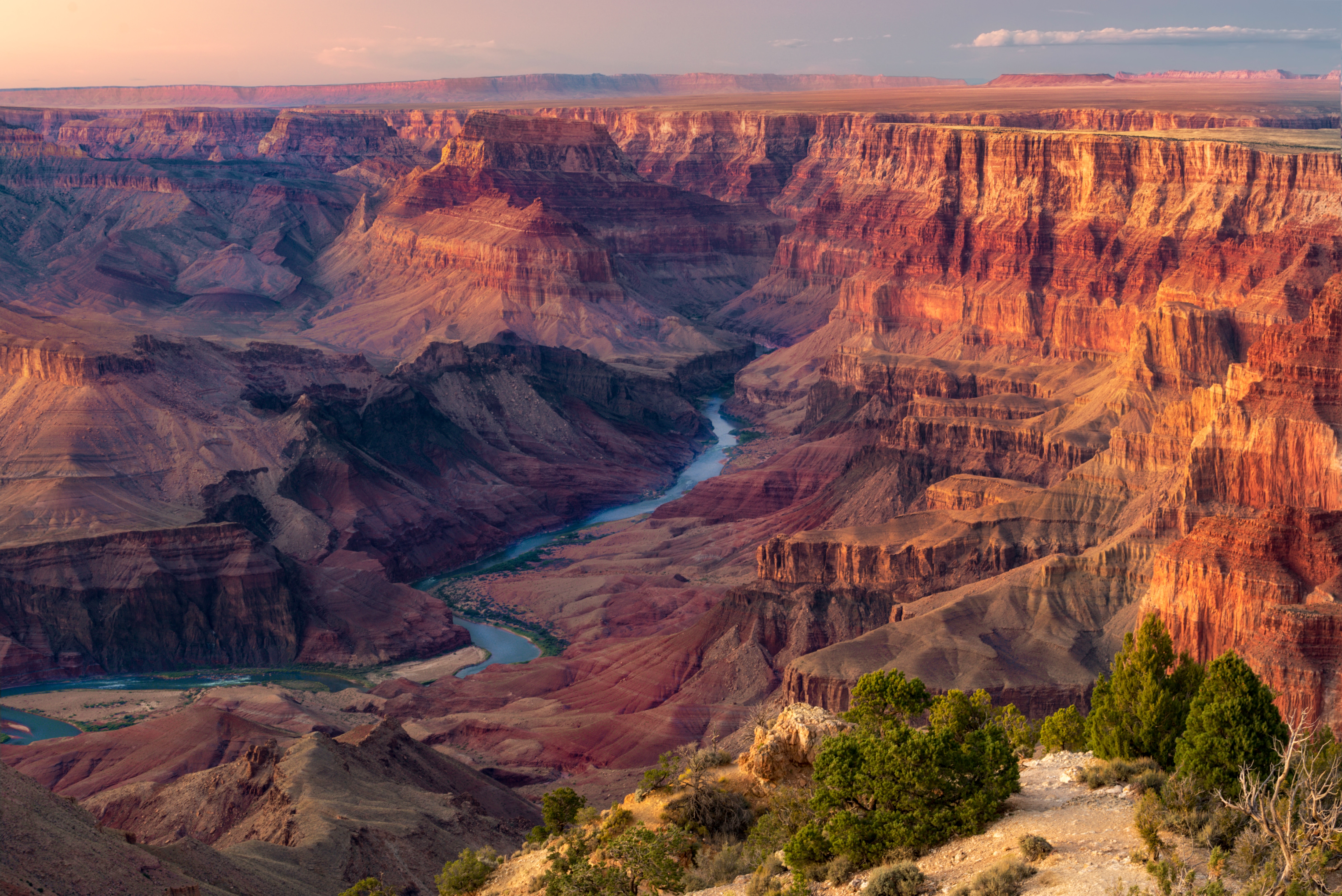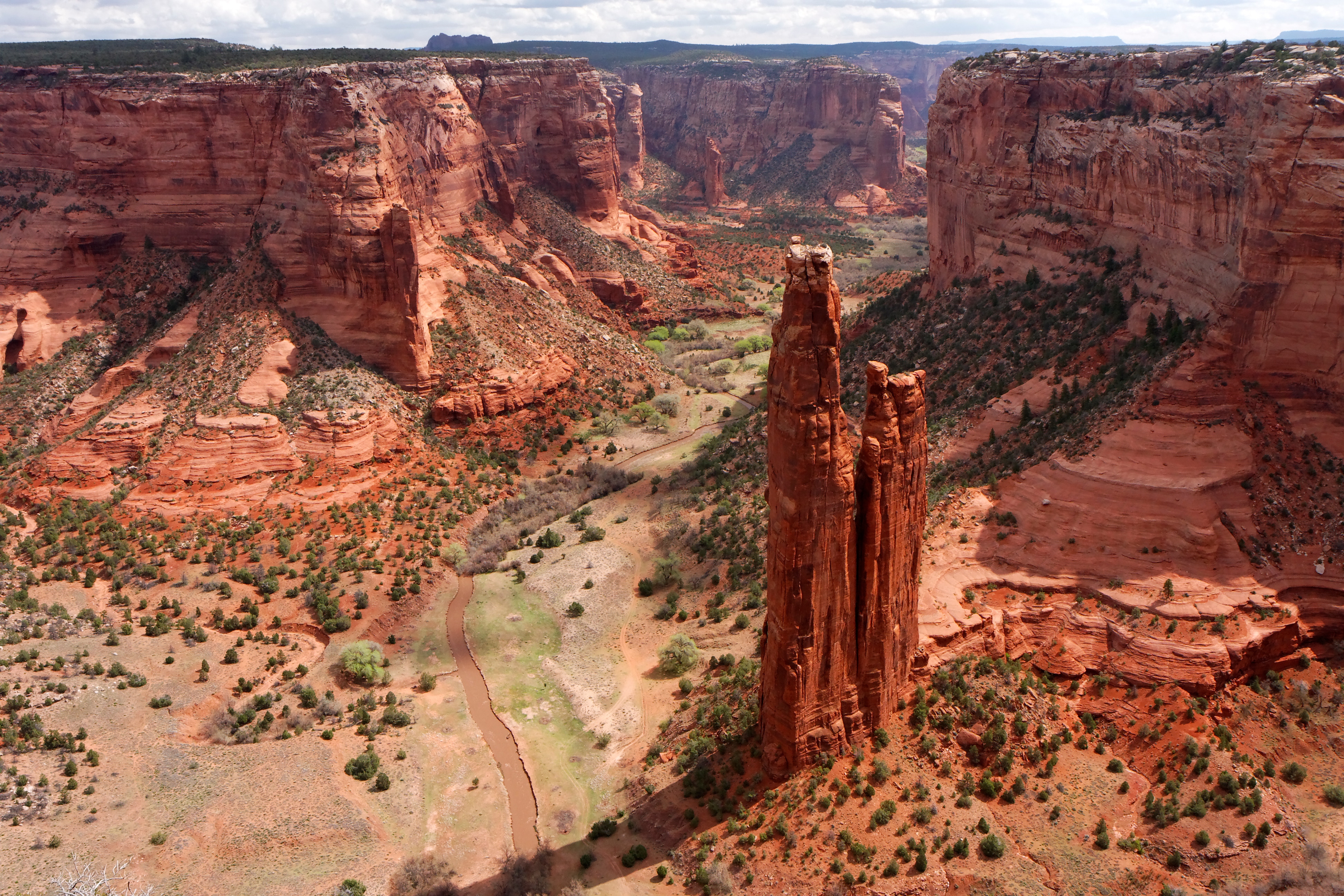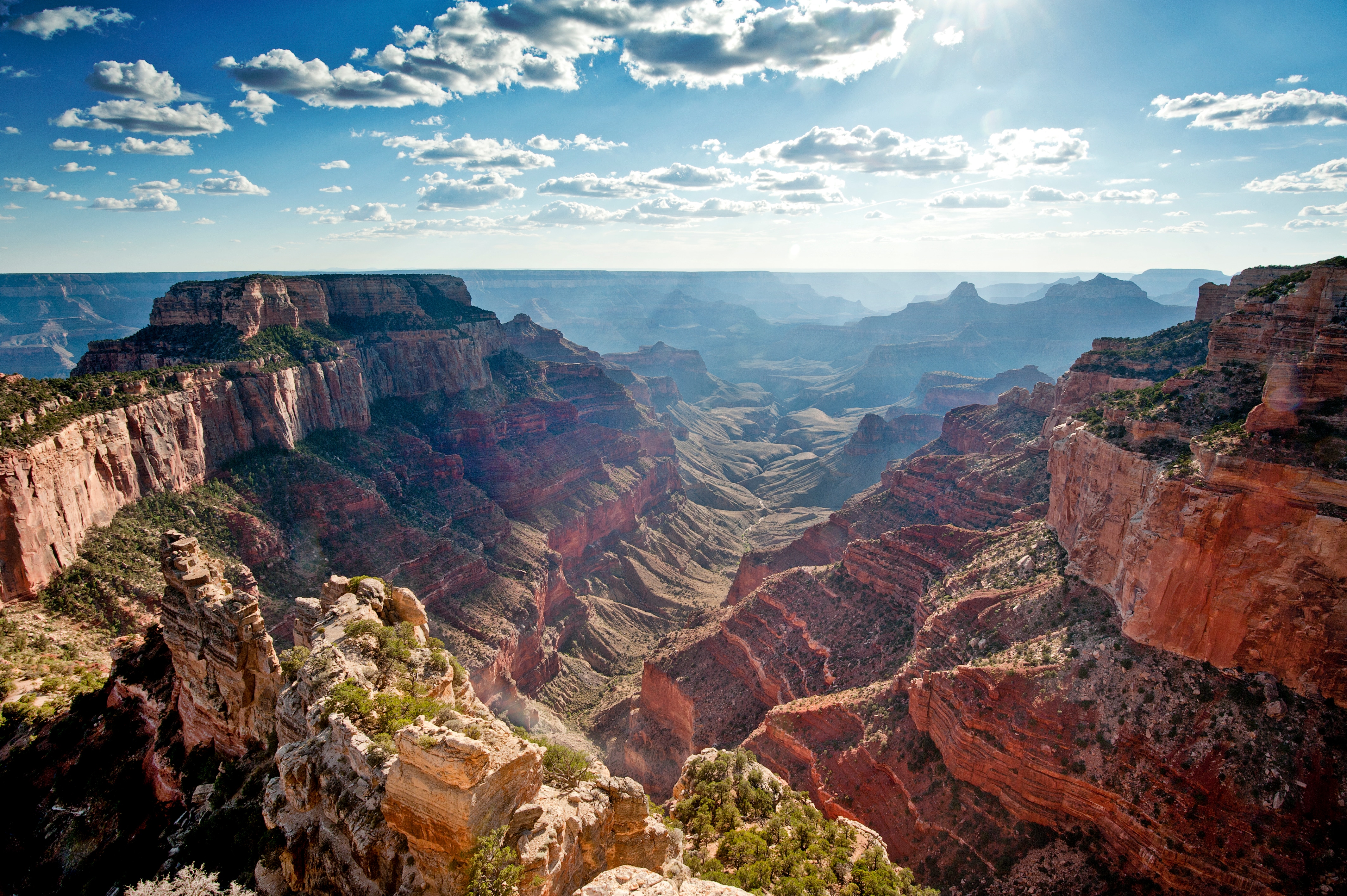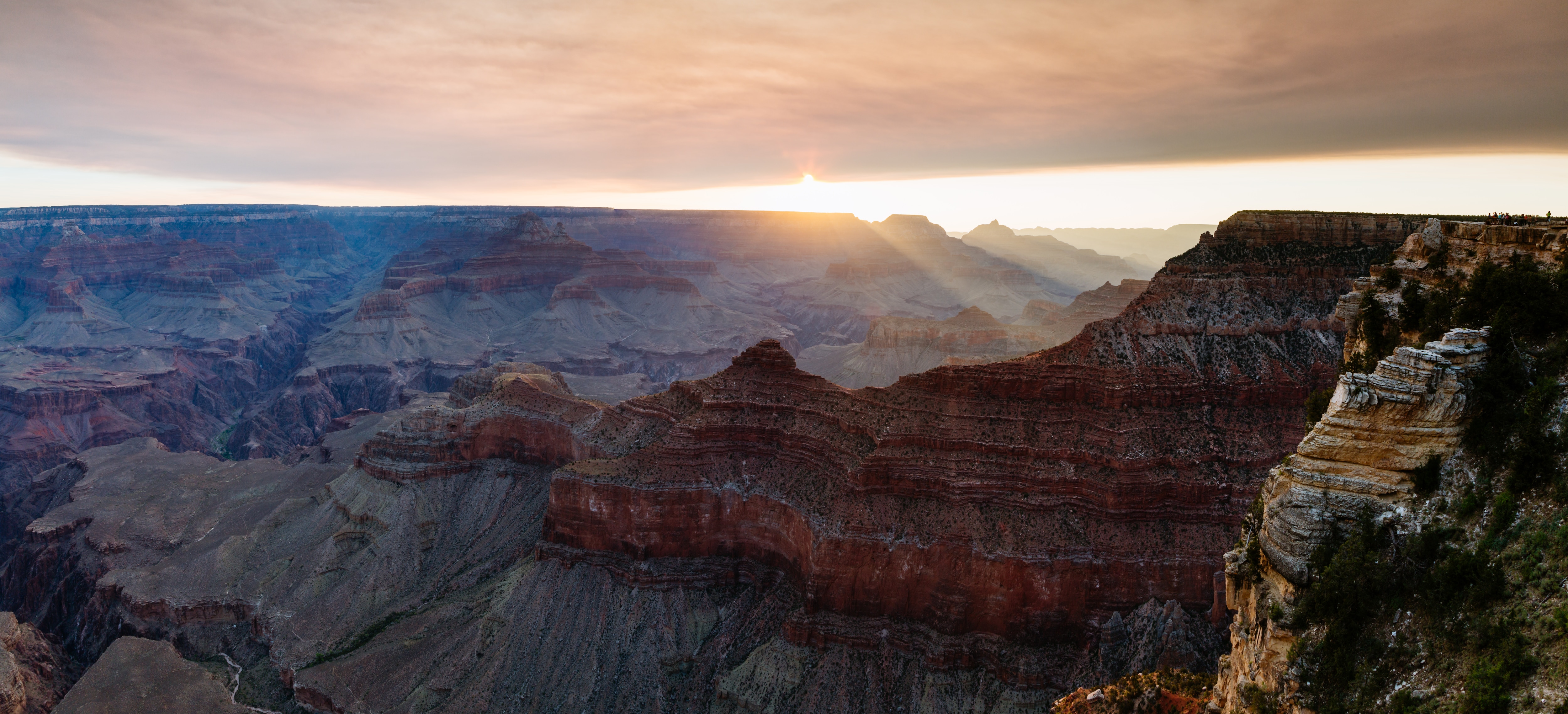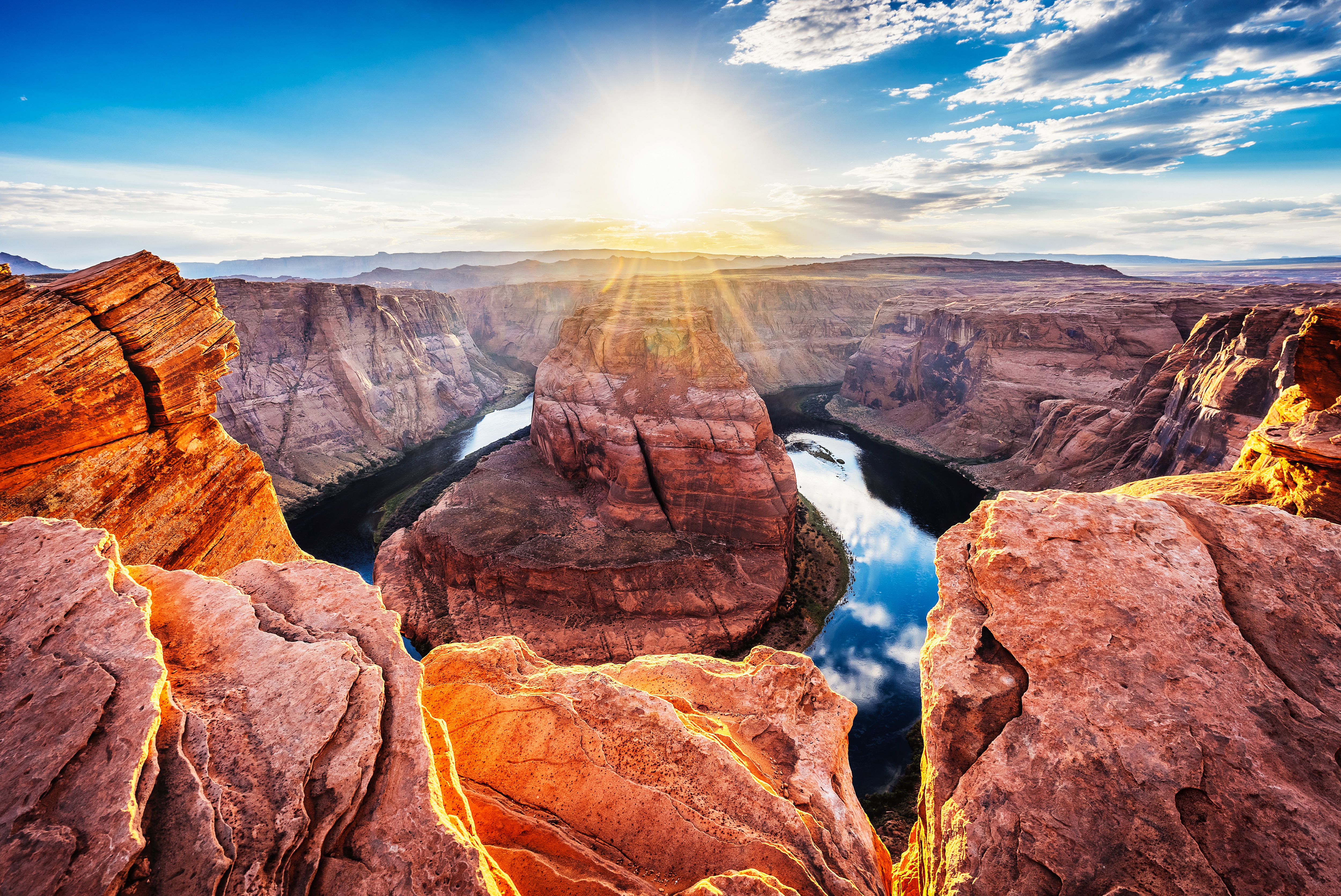Grand Canyon Road Trip
Known as one of the most impressive natural wonders on the planet, the Grand Canyon offers some of the most majestic views your eyes will ever see. Historically recognized as the largest canyon on Earth and one of the Seven Natural Wonders of the World, there are no moments short of unbelievable when visiting. Perfect for a few days of exploring, the Grand Canyon is home to spectacular views, impressive rock formations, wildlife and a history that dates back millions of years. Whether you’re an outdoor enthusiast or just looking to get out of Dodge, the canyon’s postcard-ready outlooks offer a feast of spectacular scenery. Feel the call of the wild while driving through the Grand Canyon – you won’t regret it.
Best Car for this Road Trip: Convertible
Cruise along the north or south rim of the Grand Canyon after picking up your rental at one of our many neighborhood locations around Las Vegas, Phoenix and Flagstaff. Flying in? No problem! Get going as soon as possible and pick up your rental at the airport.
Tips for Your Road Trip to the Grand Canyon:
- Leave the sandals in the car – wear a sturdy pair of comfortable walking shoes.
- Reservations for camping and lodging are strongly recommended.
- Once inside the park, save time and gas money by utilizing the free shuttle bus service that takes you throughout the South Rim.
- Pets aren’t permitted below the rim or on shuttle buses, so keep this in mind before arrival.
- Many Enterprise locations offer Roadside Protection to help put your mind at ease. This optional service includes lost key replacement, fuel delivery, flat tire repair and more.
- Arrive with a full tank of gas as stations could be quite a far distance from one another.
- Walking in some areas of the Grand Canyon can be strenuous due to elevation. Those with heart or respiratory problems may experience difficulties and should proceed with caution.
- All attractions on this list (except for Horseshoe Bend) are included in the entrance fee for Grand Canyon National Park, which is: A week-long pass for $35/vehicle; $30/motorcycle; $20/person if entering by foot, bicycle, shuttle bus or private rafting service; and free/ages 15 and under.
-
1. Grand Canyon Village
As the unofficial starting point for an adventure within Grand Canyon National Park, the village is home to several restaurants, stores, lodging options and even a grocery store. Immersed in geological beauty, many of the village’s historic buildings feature spectacular canyon views. A welcome pitstop for visitors, the village also includes a Visitor Center that’s filled with helpful information about the Grand Canyon. A great place to stroll around, pick up a snack or grab some souvenirs, there are so many things to do in Grand Canyon Village.
- Tip: While buses typically run every 10–15 minutes, check routes and schedules ahead of time (especially if you’re visiting during the off-season)
- Cost: $35/vehicle; $30/motorcycle; $20/person if entering by foot, bicycle, shuttle bus or private rafting service; Free/ages 15 and under; Prices are for a week-long pass
- Dog Friendly: Varies
-
2. Grand Canyon South Rim
Visitors are sure to get lost in the beauty along the South Rim of the Grand Canyon, where you can gaze at some of the most famous canyon views. The most developed part of the Grand Canyon, this area offers countless hiking opportunities, breathtaking vistas and endless terrain. Visitors can witness the canyon changing color as the moving sun paints organic hues along the cliff walls and rugged arches. During the day, take time to indulge in miles of walking paths with helpful information plaques along the way. After watching the magnificent sunset, settle in for a show-stopping display of glittering stars as far as the eye can see. Who knows, maybe you’ll catch a shooting star!
- Tip: Skip the lines at the entrance – park your car in Tusayan (located two miles away) and take the shuttle. For $20/day, the on/off shuttle service takes you to various spots along the South Rim of the Grand Canyon.
- Cost: A 7-day pass is priced at $35/vehicle; $30/motorcycle; $20/person if entering by foot, bicycle, shuttle bus or private rafting service; Free/ages 15 and under
- Dog Friendly: Leashed pets are only allowed on trails above the rim. For those who wish to explore without their furry friend, the Grand Canyon Kennel is open year-round for fully vaccinated dogs and cats.
-
3. Grand Canyon North Rim
Although much more difficult to reach than the Grand Canyon South Rim entrance, the North Rim offers picturesque canyon views with a laid-back atmosphere. Often less crowded than its counterpart, the North Rim is quiet, peaceful and features easy-to-navigate trails interlaced within the woods and canyon. While the South Rim highlights walking adventures for vistas, the North Rim of the Grand Canyon provides visitors with a scenic drive among alpine meadows and pine tree forests. This side of the Grand Canyon presents an authentic experience for those wanting a more rustic getaway. Even though it’s only 20 miles from the South Rim, it can take nearly five hours to drive around the canyon’s edge to the other side. Hikers will tingle from head to toe along the trail to Bright Angel Point, which features the “classic” North Rim view of sharp cliff drops and unparalleled beauty. Note that there’s no bus service on this rim – which is also closed during the winter.
- Tip: Take an early morning scenic drive to Cape Royal and catch the incredible sunrise
- Cost: $35/vehicle; $30/motorcycle; $20/person if entering by foot, bicycle, shuttle bus or private rafting service; Free/ages 15 and under; Prices are for a week-long pass
- Dog Friendly: Leashed pets are only allowed on trails above the rim, but unlike the Grand Canyon South Rim, the North Rim does NOT have a kennel, and there aren’t as many dog-friendly trails.
-
4. Mather Point Grand Canyon
Perhaps the South Rim’s most famous viewpoint, this outstanding vista offers visitors their first real view of the Grand Canyon. The trail along Mather Point – which is just a short walk from the Grand Canyon South Rim Visitor Center – features safety rails that closely hug the edge of the rim. With a panoramic view of the canyon, visitors can see how massive this natural wonder truly is. While keeping close to the canyon edge, visitors will have the opportunity to observe a spectacular wide-angle view that includes dramatic rock formations, veins of trails within the landscape and traces of the Colorado River.
- Tip: For an unobstructed canyon view, patiently wait your turn to get to the viewpoint at the end of the railing
- Cost: A 7-day pass is priced at $35/vehicle; $30/motorcycle; $20/person if entering by foot, bicycle, shuttle bus or private rafting service; Free/ages 15 and under
- Dog Friendly: Leashed dogs are allowed on trails above the rim and a handful of other areas
-
5. Grand Canyon Horseshoe Bend
Located just outside of Page, Arizona is Horseshoe Bend, a loop of riverway wrapped around an impassable sandstone tower. With cliff elevations up to 6,500 feet above sea level, it’s easy to feel the magnificence of one of the most recognizable landforms in the country. Visitors can take in the sights after a short 20-minute walk along a slightly inclined stone trail that leads to this highly photographed part of the Colorado River. A fantastic place to take in Earth’s grandeur, stopping by in the morning to catch the sunrise allows a quieter, intimate experience than during the busier time of day. Although it isn’t technically part of the Grand Canyon, this captivating curve known as Horseshoe Bend is definitely worth paying the additional fee to see.
- Tip: The trail doesn’t feature any shady areas – so make sure to wear sunscreen and a hat
- Cost: $10/vehicle; $5/motorcycle
- Dog Friendly: Leashed pets are welcome
Ready for a grand old time? Start your reservation today!
Grand Canyon FAQs
How long does it take to visit the Grand Canyon?
Although visitors spend a lot of time driving around the rim, you should make it a point to appreciate the sights. For most, one day is enough if you’re just trying to see the Grand Canyon’s main highlights. For those with more time on hand, we suggest spending a couple days exploring the park, hiking the Grand Canyon North Rim trails and catching both the sunrise and sunset.
What is the best month to go to the Grand Canyon?
It’s best to visit the Grand Canyon between April and June when the temperatures and rainfall averages are still low. It’s also advised to visit before June as the park becomes a hot spot for family vacations during summer break and scorching hot temperatures haven’t yet arrived.
What is the best state to see the Grand Canyon?
Fun fact: The Grand Canyon touches the four states of Arizona, Nevada, Utah and Colorado, and every state features a worthwhile view. When comparing, the most popular states to see the canyon are Arizona (South Rim) and Nevada (West Rim) due to accessibility.
Which side of the Grand Canyon is best to visit?
Depending on which experience you’re looking for, both the South Rim and North Rim sides are worthy of a visit. Often the ideal place for first-time visitors, the South Rim of the Grand Canyon is open year-round and includes popular viewpoints, visitor services and family activities. Closed during the winter, the Grand Canyon North Rim provides a more rustic, intimate adventure with forest-covered trails during peak months.
